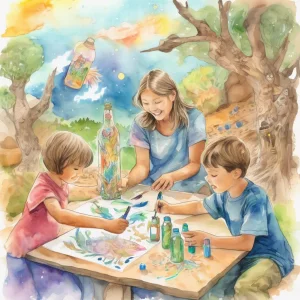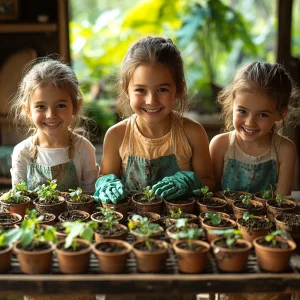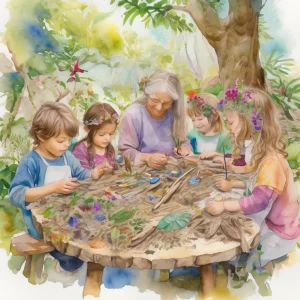Activity
Similar Activities
Empathy Harmony: Musical Language Exchange Adventure
Children’s Age: 11–15 years
Activity Duration: 35 – 45 minutes
The "Musical Language Exchange" activity is designed for children aged 11 to 15 to explore empathy through music, instruments, and foreign languages. Participants will engage with …
Activity Duration: 35 – 45 minutes
Seasonal Poetry: A Language Exploration Journey
Children’s Age: 6–10 years
Activity Duration: 30 minutes
Explore the "Language Exploration Through Seasonal Poetry" activity to enhance children's communication and empathy skills through seasonal poems. Gather materials like poems, pape…
Activity Duration: 30 minutes
Eco-Friendly Piggy Bank Crafting: Saving with Style
Children’s Age: 10–12 years
Activity Duration: 35 – 45 minutes
In the Eco-Friendly Piggy Bank Crafting activity, children will make their piggy banks using stationery materials to learn about saving money, reusing items, and environmental awar…
Activity Duration: 35 – 45 minutes
Strength & Art: Household Item Challenge Gallery
Children’s Age: 7–9 years
Activity Duration: 30 minutes
Engage children aged 7 to 9 in a creative strength training session using household items, markers, and paint to promote cognitive and physical development. Set up a safe area with…
Activity Duration: 30 minutes
Seasonal Sensory Exploration: Enchanting Discovery for Infants
Children’s Age: 6 months – 1 year
Activity Duration: 10 minutes
Explore seasonal objects with your 6 to 12-month-old in this sensory activity designed to boost cognitive development. Gather items like a plush pumpkin, a textured leaf, a shiny o…
Activity Duration: 10 minutes
Seasonal Wonders: Digital Animation Showcase
Children’s Age: 12–16 years
Activity Duration: 35 minutes
Engage children aged 12 to 16 in the "Digital Seasonal Animation Showcase" to create digital art and animations while enhancing cognitive skills and ecological awareness. Set up wi…
Activity Duration: 35 minutes
Nurturing Nature: Planting Seeds of Empathy for the Earth
Children’s Age: 7–10 years
Activity Duration: 30 minutes
The "Planting Seeds of Empathy for the Earth" activity is designed to teach children about empathy, ecology, and environmental protection through hands-on seed planting. Children w…
Activity Duration: 30 minutes
Cultural Creatures: Stop-Motion Animation Adventure
Children’s Age: 4–9 years
Activity Duration: 10 – 25 minutes
An interactive activity using technology to create stop-motion animations exploring plants and animals from diverse cultures.
Activity Duration: 10 – 25 minutes
Empathy Tales: Digital Story Clay Creations
Children’s Age: 3–18 years
Activity Duration: 10 – 25 minutes
In this activity, children aged 3 to 18 years old can explore empathy and creativity through a mix of digital storytelling and clay sculpting. You'll need a tablet or computer, cla…
Activity Duration: 10 – 25 minutes
Enchanted Digital Family Storytime Journey
Children’s Age: 6 months – 1.5 years
Activity Duration: 5 minutes
Engage your child with "Digital Family Storytime," a captivating activity tailored for children aged 6 to 18 months. Through interactive storytelling on a tablet or smartphone, thi…
Activity Duration: 5 minutes
Enchanted Garden: Nature Sculpture Garden Adventure
Children’s Age: 4–6 years
Activity Duration: 10 – 25 minutes
Engage children aged 48 to 72 months in the "Nature Sculpture Garden" activity, promoting creativity and empathy. Using natural materials like sticks and leaves, along with clay an…
Activity Duration: 10 – 25 minutes
Enchanted Glow: Gentle Lights Exploration
Children’s Age: 0 – 6 months
Activity Duration: 5 – 10 minutes
"Gentle Lights Exploration" is an engaging activity tailored for infants aged 0 to 6 months, offering a soothing and enriching sensory experience. Through gentle lights and interac…
Activity Duration: 5 – 10 minutes



























